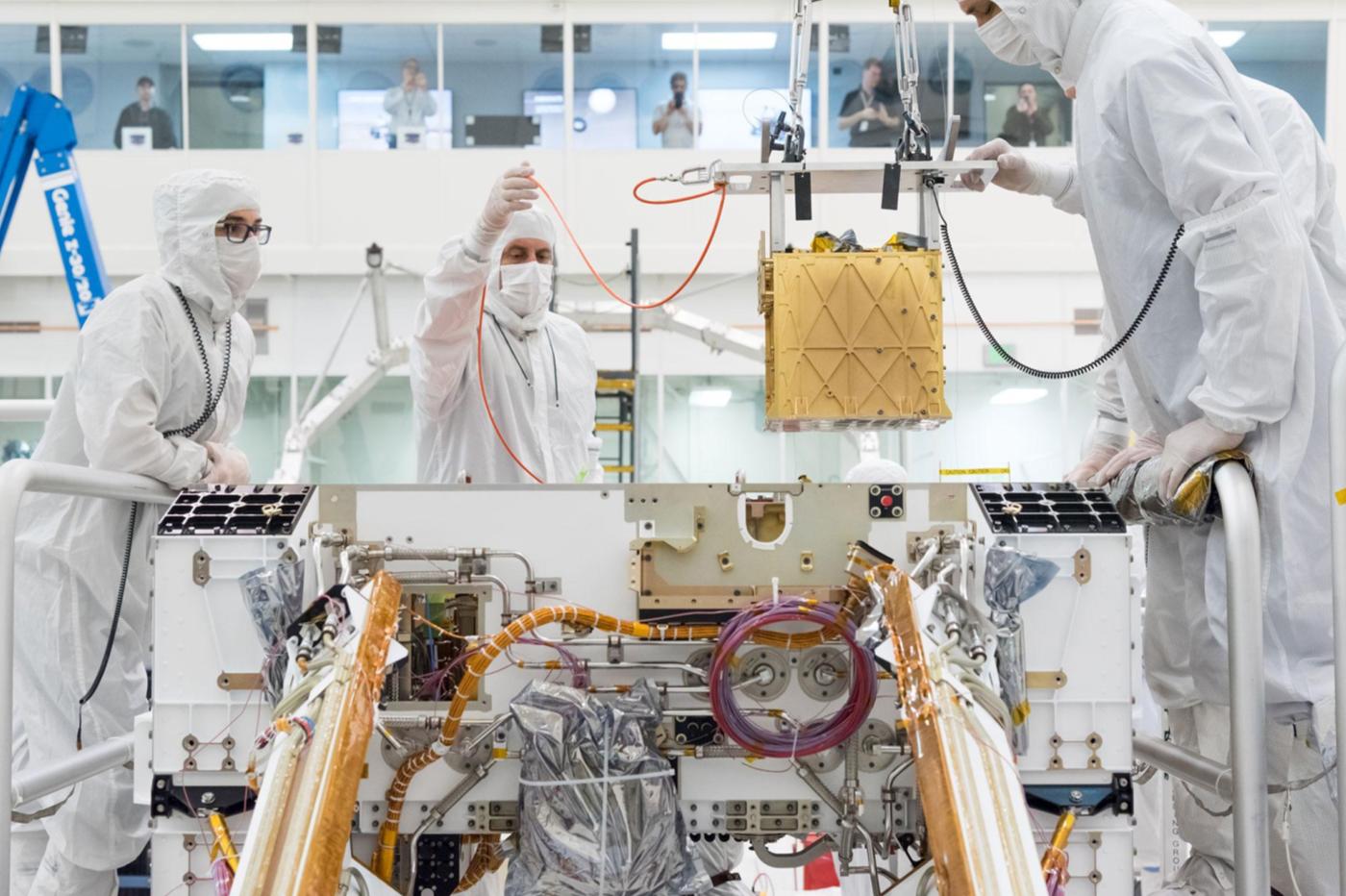
Producing oxygen on Mars is a great success
Perseverance, the hero of NASA’s Mars 2020 program, is best known for its primary mission of searching for traces of life on the neighboring planet. But the spacecraft has just completed a long-duration experiment that may be important for the future of space colonization; He showed that it is possible to extract oxygen from the unbreathable atmosphere of the Red Planet.
To achieve this, Perseverance relied on the Mars Oxygen In-Situ Resource Exploitation Experiment, or MOXIE for short. A device about the size of a microwave oven, it has produced several batches of this vital gas for humans since Perseverance arrived in 2021. On September 7, it gave birth to its last batch, ending this long experiment.
How does Moxie work?
To produce oxygen, Moxy begins by taking in carbon dioxide, which is ubiquitous in the Martian atmosphere. As its name suggests, each molecule of this gas consists of one carbon atom and two oxygen atoms. So, on paper, it’s enough to get rid of the carbon and recover the remaining oxygen.
But if the concept itself is as simple as pie, the process itself is not trivial at all. Indeed, after this gas is purified and compressed, it must be transferred to an electrolyzer operating at a temperature of approximately 800 degrees Celsius. However, producing this heat on board the rover cannot be improvised, because it is absolutely necessary to protect the rest of the tools in this furnace.
To achieve this, NASA had to develop an exceptionally capable and highly advanced isolation zone. The engineers chose nickel alloys and pure gold coatings. They are known for their ability to reflect many types of radiation very effectively. That’s why they’re used on spacesuit visors to protect astronauts’ eyes from unfiltered sunlight, or on the mirrors of the James Webb Space Telescope to redirect infrared radiation toward its sensors.
But this layer of gold is not enough by itself. It still needs an additional layer of thermal protection capable of blocking out residual radiation. NASA chose airgel. This is a family of microporous materials, built like a sponge, with microscopic holes and occupying 99.8% of their total volume. These cavities have the ability to trap gas molecules, hence the term airgel. This results in remarkable properties, starting with extremely low thermal conductivity. In other words, they are exceptionally good insulators.
Thanks to this arrangement, NASA was able to create the necessary conditions for electrolysis. Once the gas is heated, the device circulates a strong electrical current through the reaction chamber to remove carbon particles. This process produces a mixture of oxygen, carbon monoxide and carbon dioxide, the exact composition of which MOXIE must measure in order to purify it.
How much oxygen was produced?
NASA did not disclose the performance of the operation. On the other hand, it indicates that at full throttle, MOXIE produced about 12 grams of oxygen per hour. In total, the agency conducted about ten tests over two years, with a total production of 122 grams of 98% pure oxygen. This roughly corresponds to the amount a small dog would consume for about ten hours.
In absolute terms, therefore, it is petty loot. But it is only one Proof of concept Its goal was not to produce oxygen in industrial quantities. NASA was primarily looking to Check the feasibility of your operation and to ensure that the device (especially the aerogel layer) can hold up over time. Moxy achieved all of these goals, so NASA described the experiment as a success.
From now on, the challenge will be to produce a high-performance prototype that can meet the needs of an extraterrestrial colony.
The use of resources on site, is the key to colonizing space
If NASA continues to work on this type of project, it is because using local resources is difficult the condition indispensable condition interplanetary colonization. In fact, it is simply unreasonable to send piles of cargo rockets to supply future space bases. It’s a matter of logistics, but also a matter of security, since the astronauts won’t be able to rely on these deliveries; They would certainly have to be able to produce their own resources.
This is especially important for oxygen. Because in addition to allowing humans to breathe, it also acts as an oxidizing agent in almost all combustion reactions in rocket engines. In other words, humanity will certainly have to produce its own oxygen on site, not only to survive, but also to contemplate the return journey.
At present, the most promising path remains Sabatier’s reactionwhich has already been used On board the International Space Station. She allows it Converting carbon dioxide and hydrogen into water. The latter could be Use as is or electroplate to produce oxygen and methane, which can be used to power methalox rocket engines such as SpaceX’s Starship Raptors.
This process has already been mastered perfectly, and will undoubtedly occupy an important place in future lunar and Martian bases. But he Not necessarily suitable for all cases. In some cases, it may be interesting to produce oxygen directly without having to undergo energy-intensive electrolysis, a major barrier for future colonies.
This is why NASA is working on concepts like MOXIE, which would make it possible to extract oxygen directly from the Martian atmosphere. Other approaches are also being explored, in particular Producing oxygen directly from lunar regolith or Mars, which contain many silica-based or oxidised minerals.
None of these projects has reached maturity yet, but MOXIE’s success is a step in that direction. It will be very interesting to follow the development of all this Technologies more secret than the giant SpaceX rockets and others, but at least no less important For the future of our civilization.

“Incurable web evangelist. Hipster-friendly gamer. Award-winning entrepreneur. Falls down a lot.”
